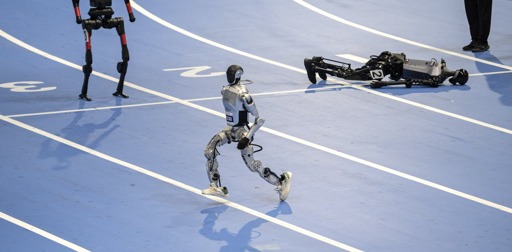Robots come in a vast array of shapes and sizes. By definition, they’re machines that perform automatic tasks and can be operated by humans, but sometimes work autonomously – without human help.
Most of these machines are built for a specific purpose: think of the puck-shaped robot vacuum or a robotic assembly arm in a factory. But recently, human-shaped or humanoid robots have increasingly entered the spotlight.
Humanoid robots are exactly what they sound like – machines with arms, legs, a torso and a head, typically walking upright on two legs. Investment in humanoid robot development has been skyrocketing recently. If you have several thousand dollars, some are already available for purchase.
But why is there so much interest in human-shaped robots? What are they good for, apart from showcases such as Beijing’s World Humanoid Robot Games or funky dance routine videos?



This vision of humans in the home is so idealistic. What homes? Who is going to be able to afford that? Europeans can barely buy homes, many people are struggling to make ends meet, and they imagine people are going to buy a car, a smartphone, an AR headset, a house robot, subscriptions to 100s of services, and maybe tickets to space someday? There’s simply not enough money in the middle and lower classes anymore to pay for this stuff.
Anti Commercial-AI license